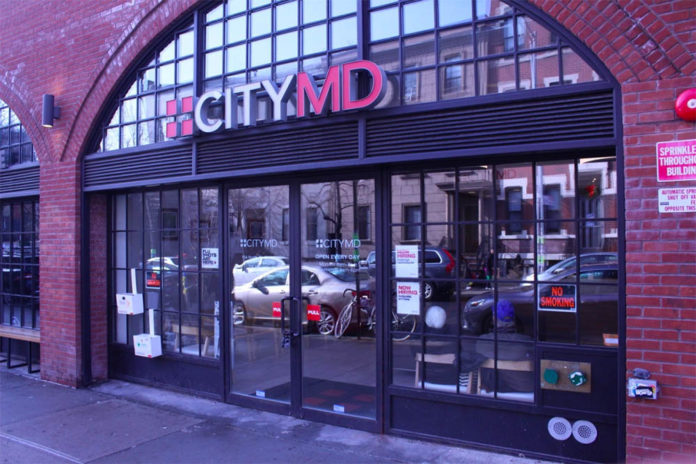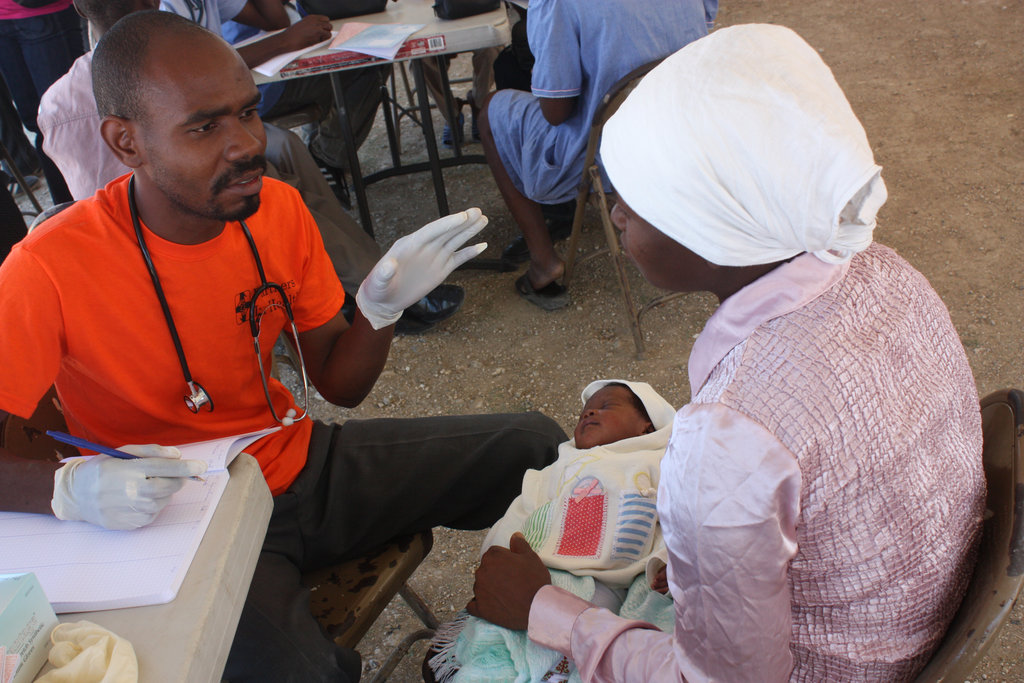
I am a doctor who has worked for years with Partners In Health (PIH), an organization that started in Haiti and then expanded globally. This is not the first epidemic I have faced. I have been on the front-lines in battling HIV, Ebola, cholera, tuberculosis, and many other outbreaks.
Today, I am working in New York City, now the epicenter of the world’s COVID-19 pandemic, seeing patients in neighborhoods most affected by the virus: Jackson Heights, Corona, The Bronx, Washington Heights, and Flatbush.
One thing that we in PIH have learned from our experience in fighting epidemics is that success relies on the community embracing behaviors that prevent the disease’s spread. Public health experts emphasized this very point in The Journal of the American Medical Association on Apr. 10. They noted that things like “social distancing” and wearing masks – know as Non-Pharmacologic Interventions (NPIs) – were the most effective, and in fact the only effective measures, to counter COVID-19’s spread. These NPIs were the principal measures used in Wuhan, China, where they recently lifted the quarantine.
We have all heard a lot about these measures, which have been adopted in New York, but many people, perhaps panicked by the headlines, are still doing things which spread the disease.
In New York, large numbers of people were already sick with COVID-19 by the time the response to the coronavirus started. People flooded the hospitals, severely short of breath. Fear spread. More and more people who had fevers with limited or no respiratory symptoms started seeking care. As news of hospital deaths spread, people sought out alternatives at health clinics and urgent care centers.
At the same time, people who need routine care for conditions like fractures, lacerations, or urinary tract infections also go to urgent care centers, but they are now at risk for contracting COVID-19. Vulnerable groups, like older people and those with diabetes, need to visit these clinics more often and are at particular risk. I’ve seen many examples of patients in their 70s, sitting in the same waiting room as healthy young people with only fever and others who come just wanting to “get checked.”
Understand this: there is still very limited testing, so most people showing up to a health facility won’t get tested. COVID-19 is so contagious that we all should assume that even mild symptoms, and certainly a fever, indicate COVID infection. Also, many people who have no symptoms are contagious, especially the young. There is currently no treatment for COVID-19 available to people who are not severely ill. People with only a fever, cough, body aches, or sore throat should not go to their local urgent care facility. Just STAY HOME, drink tea, and let your immune system do its job.

If you are young, healthy, and not severely short of breath, do not go to a clinic or health center. You will put older, more vulnerable people at a terrible risk. You also put at risk the heroic people who drive our buses, subways, cabs, and Uber cars, as well as other passengers, when you head to a clinic where really nothing can be done.
For those who are vulnerable (with diabetes, hypertension, or older people) and have severe shortness of breath, please don’t hope for help in an urgent care center. Severely ill people should go directly to the hospitals where their breathing can be supported with oxygen and ventilators. Yes, hospitals are under-resourced, but even the most overburdened (including Brooklyn’s Kings County Hospital and Queen’s Elmhurst Hospital) are saving far more people than are dying. About 99% of COVID-19 victims survive. The survival rate is somewhat less for the vulnerable, but still, the vast majority pull through. If you don’t actually need help to breathe, don’t seek it. If you do, seek the right type of help, which in most cases with this disease means: go to a hospital.
An urgent care is appropriate for people feeling short of breath, but not severely short of breath (like you’re suffocating), especially among people in high risk groups. An urgent care center doctor can assess one’s breathing with a stethoscope and one’s oxygen level and perhaps take a chest x-ray, to make sure there is not another cause of one’s symptoms. This will determine whether hospitalization is needed, or if one can simply rest at home.
Massachusetts, arguably the most progressive state for health care (Romneycare, which started there, was the predecessor to Obamacare) is tasking PIH to help lead its response to COVID-19, by using the very type of community-based response developed in Haiti.
The main lesson we learned in Haiti is that health epidemics must be attacked at the community level. This is the approach being applied in Massachusetts. Contact tracing at a community level, isolation, and dissemination of education about prevention are key. We learned this from the Haitian people, where the community must care for itself because there are often no other options. That spirit of solidarity and community consciousness is needed now, here in the U.S. and around the world.
The U.S. government has been far too slow in aggressively messaging and enforcing the behaviors that are fundamental to stopping the spread of this disease. “We the People,” in our communities, must now step up. Stopping the spread is the only thing that will stop the disease. The key things to observe and remember are:
- Physical distancing- staying home, even if you have a fever and feel sick.
- If you are having serious difficulty breathing, go to a hospital.
- If you’re short of breath, but not sure of the severity, an urgent care center is appropriate for evaluation.
- There is no widespread testing yet, so don’t expect to receive testing in health clinics.
- Check on your elderly and vulnerable neighbors, but try not to have close contact with them.
- Remember, many people, especially younger people, may be infectious but have no symptoms.
- Use phones, Zoom, Skype, or Face-time, or speak through glass or at a distance.
- Wear masks. Even if they help only a little, we need every little bit of help we can get.
In the world’s few places that are emerging from this epidemic (China and South Korea), the Non-Pharmacologic Interventions of aggressive distancing are what worked. (Of course, their testing was much more widespread and better implemented than here in the U.S..)
Please, let’s all be conscientious and do our part.
Dr. Keith Joseph was until recently PIH’s Country Director in Malawi.










